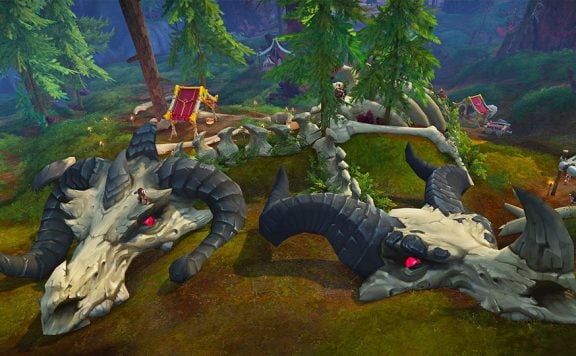How do I Analyze Statistics in Valorant?
Valorant is a popular tactical first-person shooter game that demands both skill and strategy. To excel in Valorant, it’s essential to not only focus on your gameplay but also analyze your statistics. In this article, we’ll delve into the intricacies of analyzing statistics in Valorant, providing you with valuable insights and tips to improve your performance. Let’s get started!
In Valorant, “BO3” stands for “Best of Three.” It is a format commonly used in competitive gameplay, particularly in tournaments and ranked matches. Valorant bo3 match, two teams compete against each other, and the first team to win two out of three rounds or maps is declared the winner of the match. This format adds an extra layer of strategy and competition to Valorant matches, as teams must consistently perform well throughout the series to secure victory.
Introduction
Valorant is a game where every move counts. Whether you’re a casual player or aspiring to go pro, understanding and analyzing your statistics can significantly enhance your gameplay. By scrutinizing various aspects of your performance, you can identify strengths, weaknesses, and areas for improvement.
In this article, we’ll walk you through the process of analyzing statistics in Valorant, providing expert insights and practical advice. From tracking your kill-death ratio (K/D) to evaluating agent-specific data, we’ve got you covered. So, gear up and prepare to take your Valorant skills to the next level!
How do I Analyze Statistics in Valorant?
Analyzing statistics in Valorant involves a systematic approach to evaluating your gameplay data. To get started, follow these essential steps:
1. Track Your Kill-Death Ratio (K/D)
Your K/D ratio is a fundamental statistic that reflects your performance in Valorant. It’s calculated by dividing your total kills by your total deaths. A K/D ratio greater than 1 indicates that you’re getting more kills than deaths, which is a positive sign.
To improve your K/D ratio, focus on enhancing your aim, positioning, and decision-making during matches.
2. Assess Headshot Percentage
Headshots are crucial in Valorant, as they deal more damage than body shots. Tracking your headshot percentage can reveal your accuracy and aiming skills. Aim for a headshot percentage of at least 40% or higher.
3. Analyze Win Rate
Your win rate is a significant indicator of your team’s overall performance. It’s calculated by dividing the number of matches won by the total number of matches played. A high win rate suggests effective teamwork and strategy.
4. Evaluate Agent Performance
Valorant features a diverse roster of agents, each with unique abilities. Analyze your performance with different agents to identify which one suits your playstyle best. Track your win rate, K/D ratio, and average combat score for each agent.
5. Monitor Map Performance
Certain maps in Valorant may favor specific playstyles or agents. Keep track of your performance on different maps, noting your win rate and average performance. This data can help you make informed decisions about map selection.
6. Review Match History
Valorant provides a detailed match history, showcasing your recent matches, scores, and statistics. Reviewing your match history can help you identify patterns in your performance and pinpoint areas that require improvement.
7. Utilize Third-Party Tools
Several third-party websites and applications offer in-depth statistics and analysis for Valorant players. Consider using these tools to gain further insights into your gameplay.
FAQs (Frequently Asked Questions)
How do I track my K/D ratio in Valorant?
To track your K/D ratio in Valorant, simply go to your career page within the game. Your K/D ratio will be displayed there, along with other relevant statistics.
What is a good K/D ratio in Valorant?
A good K/D ratio in Valorant is generally considered to be above 1. However, the ideal ratio can vary depending on your skill level and playstyle.
How can I improve my headshot percentage in Valorant?
Improving your headshot percentage in Valorant requires practice and precision. Spend time in aim training maps, focus on crosshair placement, and aim for head-level shots during matches.
Which agents are best for beginners in Valorant?
For beginners in Valorant, agents like Sage and Brimstone are often recommended due to their straightforward abilities and team utility.
What maps should I focus on in Valorant?
It’s essential to have a good understanding of all maps in Valorant. However, you can choose to focus on maps that complement your playstyle and agent preferences.
Are there any recommended third-party tools for Valorant statistics analysis?
Yes, several third-party tools like Valorant Tracker and Blitz offer detailed statistics and analysis for Valorant players. Explore these options to enhance your gameplay analysis.
Conclusion
Analyzing statistics in Valorant is a vital part of becoming a better player. By closely examining your K/D ratio, headshot percentage, win rate, agent performance, map data, and match history, you can make informed decisions to improve your skills.
Remember, practice makes perfect in Valorant, so keep honing your abilities and adapting your strategies. With dedication and the insights gained from analyzing your statistics, you’ll be well on your way to mastering this exciting game.





